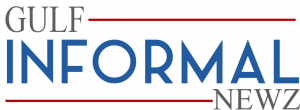Budgets drawn up in December assumed an oil price of around $50 a barrel
DUBAI: Reducing overdependence on oil has long been the rationale of economic policymakers in Saudi Arabia and the rest of the Gulf Cooperation Council (GCC) states, but the fundamental importance of the revenue regional governments derive from crude exports is enduring.
New research from Farouk Soussa, economist at Goldman Sachs, shows just how important, especially in the current climate of rising oil prices.
Brent crude hit a year high recently, back above the $70 per barrel level it reached some time before the coronavirus disease (COVID-19) pandemic was officially declared, on the back of stringent supply control by the OPEC+ alliance.
The medium-term effect on government balances across the GCC from this level of prices is significant, mainly because governments have had only limited success in reducing their economic reliance on the commodity.
“On average, the proportion of government revenues coming directly from oil activities in the GCC has fallen by 20 percent of the total in the past decade, but remains high at 60 percent,” Soussa said in his research findings.
The notion of oil “breakeven” prices was a contentious one for some regional policymakers, but Soussa pointed out that they were a fact of economic life. “Breakevens are a function of broader policy parameters, such as government spending and oil production rates, but they are also a measure of the extent to which the exposure to oil prices is affected by diversification policies,” he said.
The breakeven price for fiscal budgets is calculated at $70 per barrel across the GCC, while the figure for external trade breakeven is lower, at around $50.
If current price levels are maintained in the short to mid-term, the effect on regional economies would be significant, and could start to show as early as this year. Budgets drawn up in December assumed an oil price of around $50 a barrel, but that has been well overtaken in the first quarter. Goldman Sachs is forecasting a 2021 average of $73 a barrel.
That gives policymakers a significant amount of leeway. For all the talk recently of the drain of foreign reserves from big budgets and increasing debt, it is remarkable how responsive those indicators are to even a modest rise in the crude price.
Soussa estimates that the GCC would need to borrow an aggregate of $270 billion over the next three years if Brent had stayed at $45 a barrel, but this would virtually disappear – a meager $10 billion borrowing requirement – at $65 a barrel.
That could mean that budget deficits would be reversed, or that policymakers could continue to run deficits at the current levels, and borrow money to fund the big investment programs, such as Saudi Arabia’s Vision 2030 strategy, aimed at accelerating the diversification away from oil dependence.
Soussa also highlighted the apparent success of the introduction of value-added tax (VAT) into the economic equation in the region, and the role tax has played in diversifying government revenues.
“The three countries that have so far introduced VAT have seen the greatest success in diversifying their revenues, with Saudi Arabia outperforming its peers substantially, almost halving the share of oil in total revenues,” he said, pointing to the Kingdom’s “proactive” tax policy when it raised VAT to 15 percent at the height of the COVID-19 pandemic lockdowns last summer.
Whatever future forays there may be into other forms of taxation in the GCC, the price of crude will continue to be the most important indicator of regional economic health for the foreseeable future.
It is a virtuous economic cycle: Higher oil prices give policymakers the resources to escape the necessity for higher oil prices.




